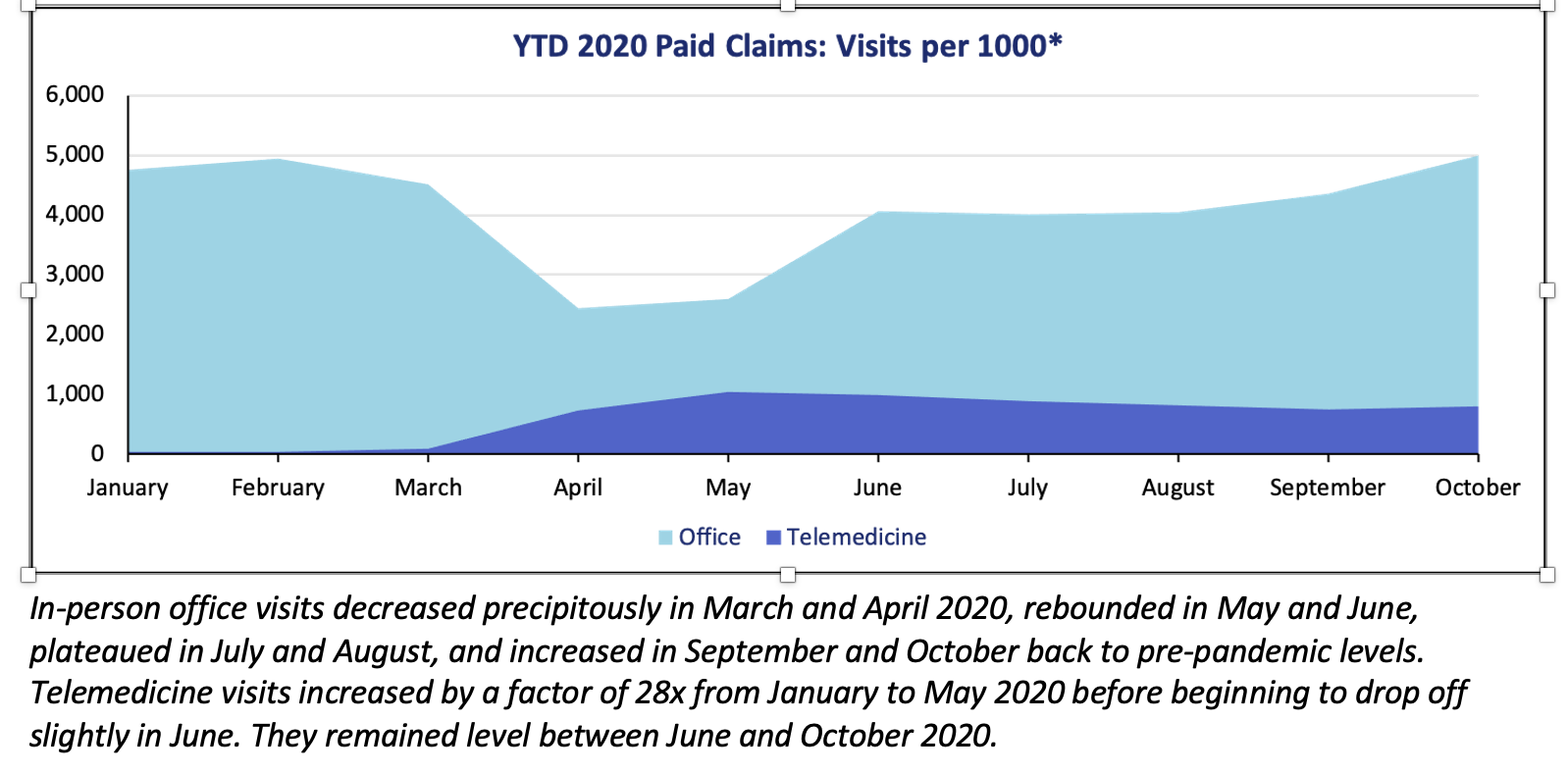
Mirroring data from hospitals that showed fewer patients coming in for appointments and to emergency rooms last year, many employers saw their medical costs fall slightly in 2020.
An analysis of claims data from 1.8 million employees conducted by the Health Transformation Alliance, a cooperative of 58 self-insured companies, found that medical costs were down 4% between January and October of 2020. On the other hand, pharmacy costs rose 4.5%, an increase attributed to more patients refilling their prescriptions over a 90-day period.

Behavioral Health, Interoperability and eConsent: Meeting the Demands of CMS Final Rule Compliance
In a webinar on April 16 at 1pm ET, Aneesh Chopra will moderate a discussion with executives from DocuSign, Velatura, and behavioral health providers on eConsent, health information exchange and compliance with the CMS Final Rule on interoperability.
As claims for in-person visits declined during the pandemic, telehealth visits increased 28-fold between January and May, according to the report. Over the summer, when more people returned for in-person visits, telehealth flattened out at about 20% of total visits, still well above previous levels.
“These results indicate a permanent change in patient acceptance and use of telemedicine,” Health Transformation Alliance Chief Strategy Officer Lee Lewis said in a news release. “While the traditional office visits did recover since the initial shock of the pandemic, telemedicine use increased dramatically before settling at a high plateau.”

Claims data from the Health Transformation Alliance shows telehealth visits remained steady after flattening out over the summer. Photo Credit: Health Transformation Alliance
Both emergency room visits and hospital admissions fell off after the start of the pandemic, though admission rates began to increase in June.

A Deep-dive Into Specialty Pharma
A specialty drug is a class of prescription medications used to treat complex, chronic or rare medical conditions. Although this classification was originally intended to define the treatment of rare, also termed “orphan” diseases, affecting fewer than 200,000 people in the US, more recently, specialty drugs have emerged as the cornerstone of treatment for chronic and complex diseases such as cancer, autoimmune conditions, diabetes, hepatitis C, and HIV/AIDS.
Preventive visits also fell in the early months of the pandemic, though they have since recovered to normal levels. It’s also worth noting that adult preventive visits fell more sharply than for children and babies.
Rates of common preventive screenings, including mammograms, colon cancer screenings, cervical cancer screenings and cholesterol screenings also fell between March and June, before rebounding.
It’s not yet clear whether the surge of Covid-19 cases at the end of the year drove down in-person appointments again. Because of lags in getting post-adjudicated claims data, the report only includes claims data through October.
Photo credit: elenabs, Getty Images











